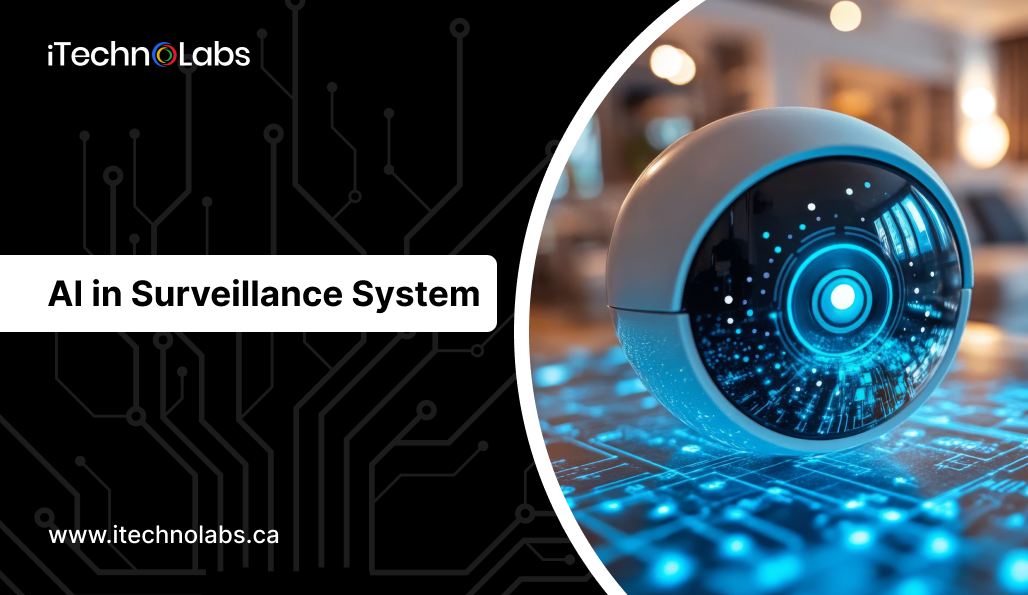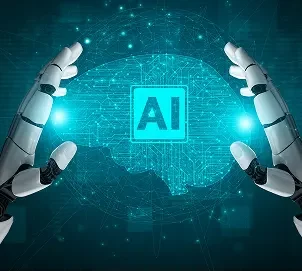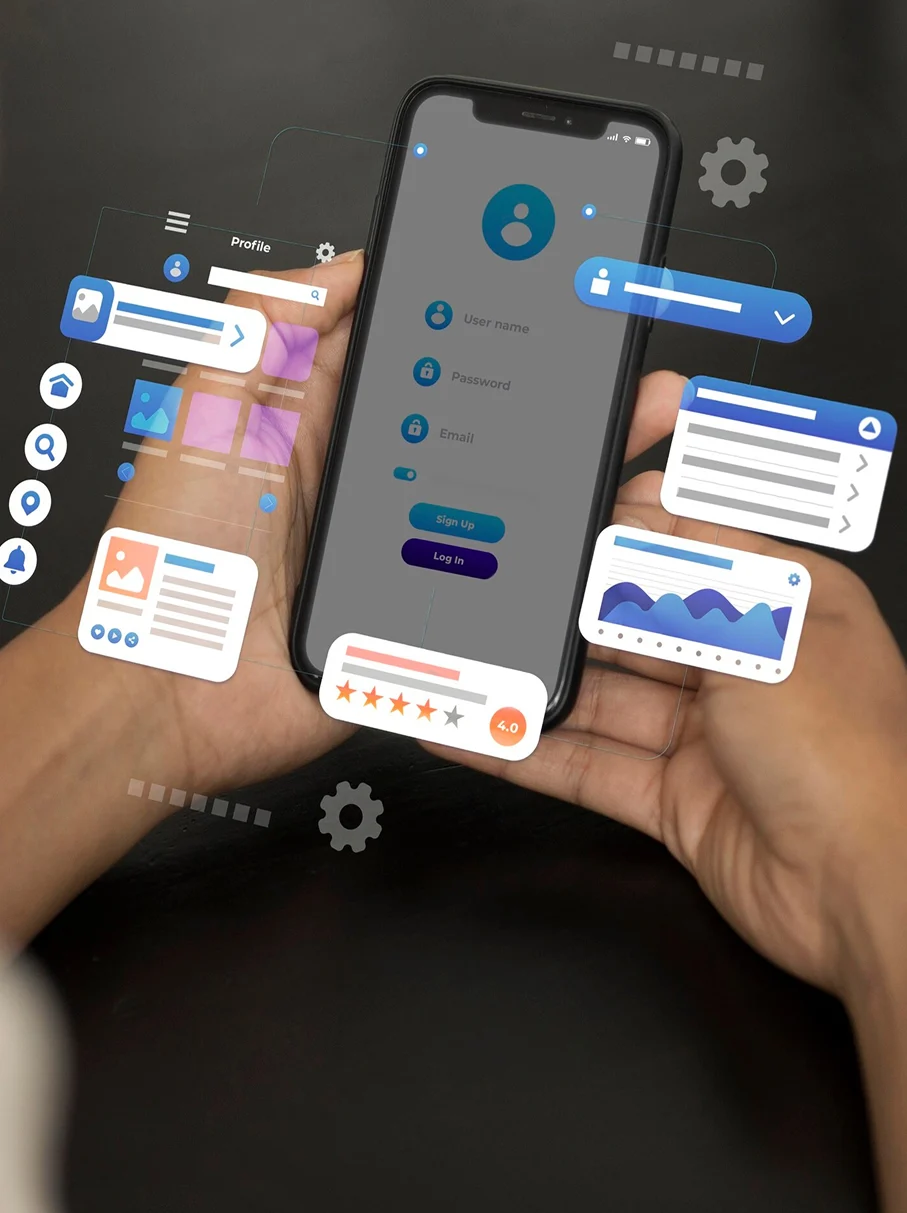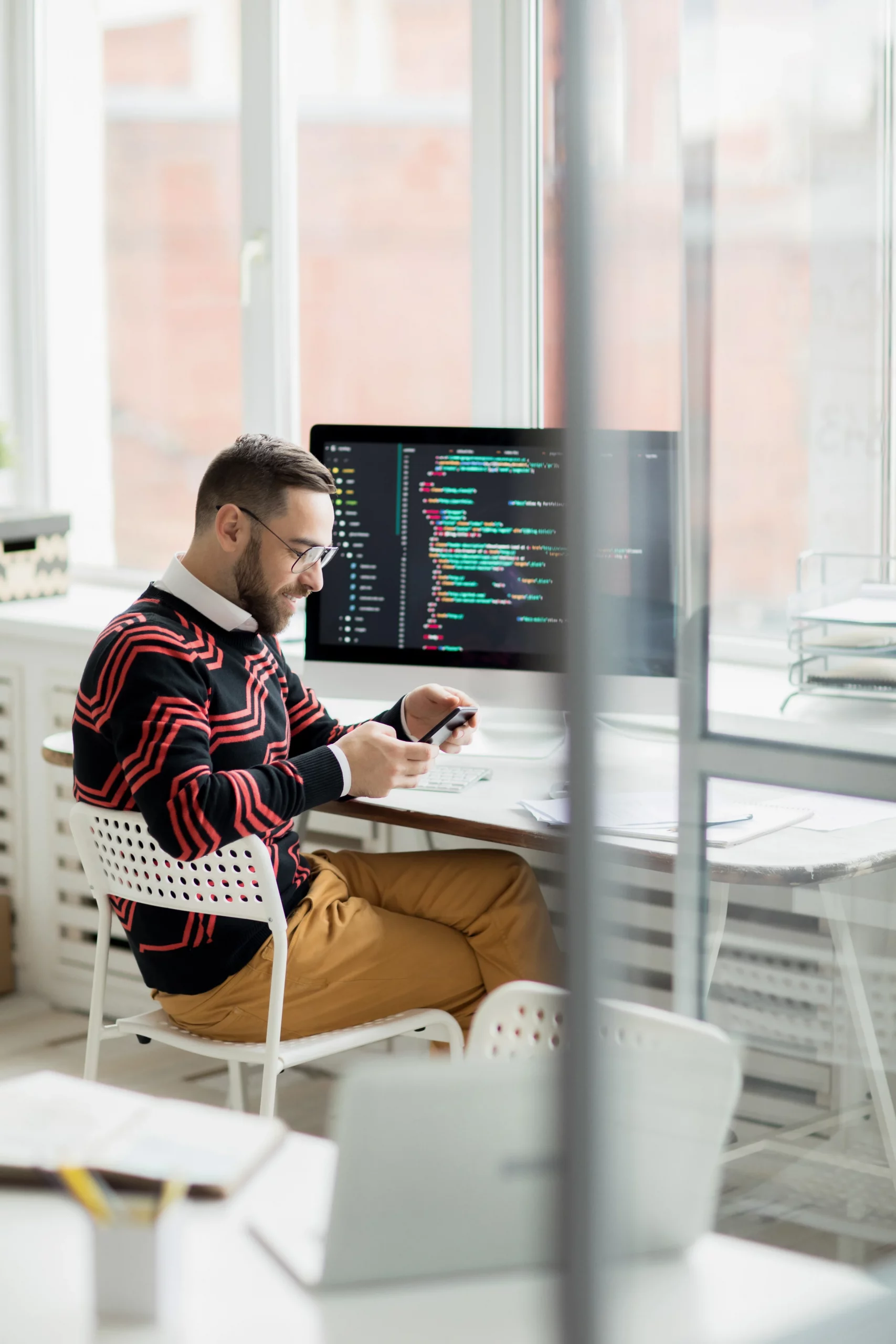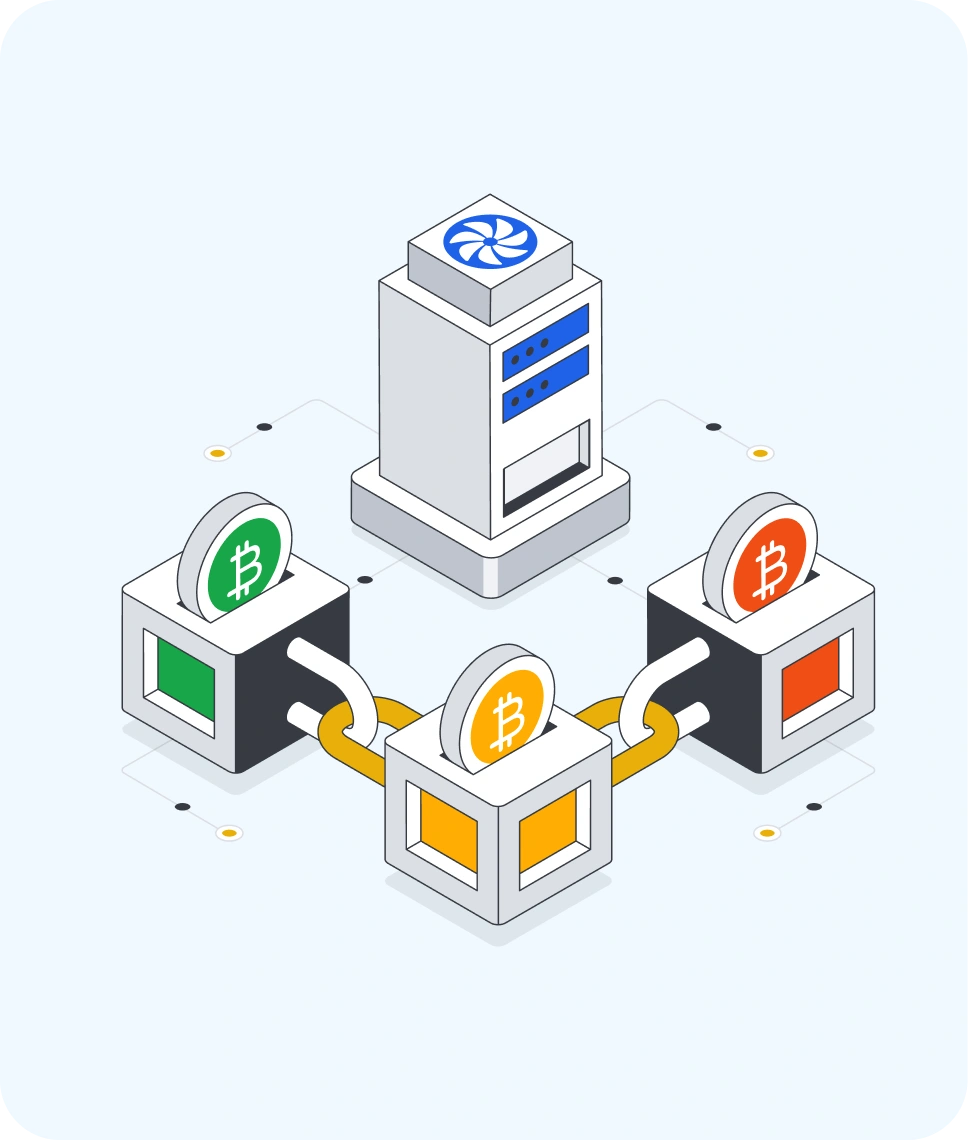Safety has become a critical issue in the 21st century. Home owners keep so many security personnel and still constantly live under fear. Not just individuals but organizations like hospitals, supermarkets, private offices, financial firms, all are facing the same problem of safeguarding their assets. Now what if you can use an advanced system equipped with smart cameras and sensors which will detect every minor movement around the clock and send you alerts if there is anything unusual. It seems like a scene from a movie, but in 2025, it’s actually becoming a reality.
AI in surveillance systems uses machine learning algorithms to differentiate between regular human activities and unusual behaviour patterns and thus informs the security team in real-time to take quick action and prevent security breach. AI-powered security systems not only saves cost, but also prevent cyber attacks, allow room for scalability, reduce human work load, and respond faster to any kind of anomalies. Read this blog to learn about the benefits of AI-driven security systems, its applications, and challenges.
Benefits of AI in Surveillance Systems
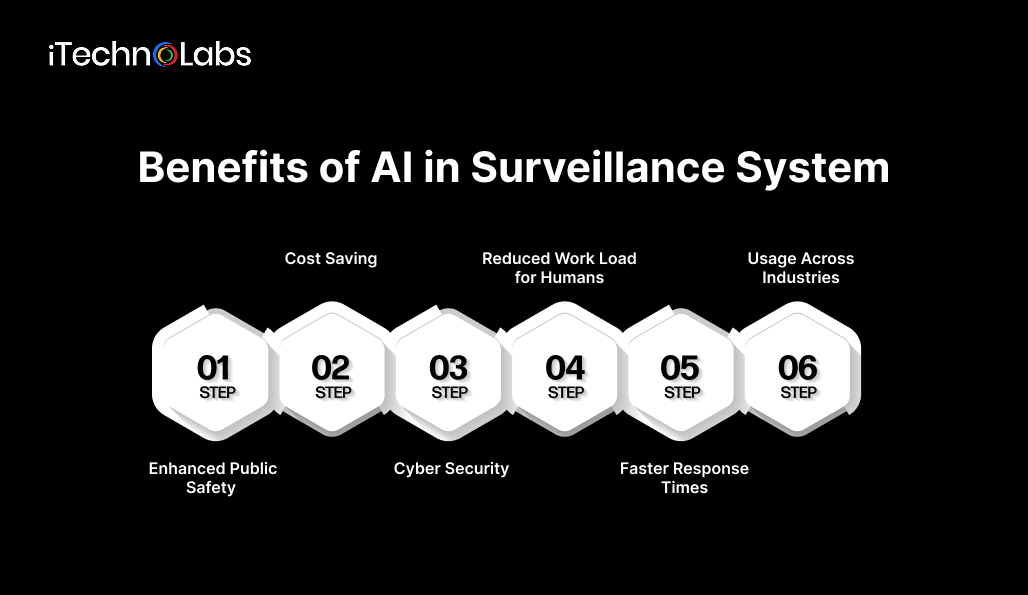
AI surveillance systems have various benefits such as improved public safety, cost reduction, quicker response time, flexibility, scalability, and reduced workload for humans. Moreover, this highly advanced system can be used across different industries like retail, healthcare, hospitals, and more. Let’s take a look at some of the benefits of AI-enabled surveillance systems:
1. Enhanced Public Safety
AI in surveillance systems analyzes people’s behaviour in real-time and thereby ensures public safety in the most crowded areas like transportation hubs and public events. Basically, AI in surveillance systems ensures that no threat is overlooked, making the environment safer for people.
By analyzing anomalies and suspicious activities AI tools in surveillance can alert concerned authorities and prevent people from any potential dangers. This not only reduces crimes but also makes people feel safe.
2. Cost Saving
By eliminating the need for on-site security personnel, AI saves thousands of dollars for you. With 24*7 analysis and monitoring, AI can quickly detect threats and alert security, reducing the need for consistent human monitoring and consequently saves costs.
AI in surveillance systems ensures the businesses utilize its resources in the most optimal way. Additionally, no false alarms and quicker response time improves the overall efficiency.
3. Cyber Security
In 2025 cyber attacks are increasing day by day, which traditional surveillance systems are unable to tackle. Here comes AI-powered security systems that do a better job than the conventional models.
Based on the past data AI security systems can be trained well to detect any kind of intrusions and adapt accordingly. Through consistent learning from data patterns AI in surveillance systems can improve their threat detection capabilities.
4. Reduced Work Load for Humans
AI in surveillance systems automates regular tasks like 24*7 monitoring which otherwise requires consistent human attention. By taking out false alarms and highlighting the most relevant incidents, it reduces the load on security staff.
AI in surveillance systems saves up the time for human security teams and allows them to focus on strategic planning. Ultimately, this improves the efficiency and effectiveness of the security team.
5. Faster Response Times
Timely action is crucial when it comes to preventing security threats. AI in surveillance systems can analyze mountains of data in no time. Therefore it quickly detects unusual patterns and alerts the security personnel on the spot. This lets the security team react quickly and reduce the impact of a security breach.
6. Usage Across Industries
AI-driven surveillance systems can be used across a wide range of industries such as transportation, retail, healthcare and others. For instance, AI surveillance systems in retail can analyze customer behaviour and prevent threats. On the other hand, in healthcare it ensures patients’ safety and monitoring in the most sensitive areas.
AI surveillance technologies are becoming a popular choice for multiple organizations that want to create safer environments for their people and customers.
Applications of AI-Enabled Security Systems
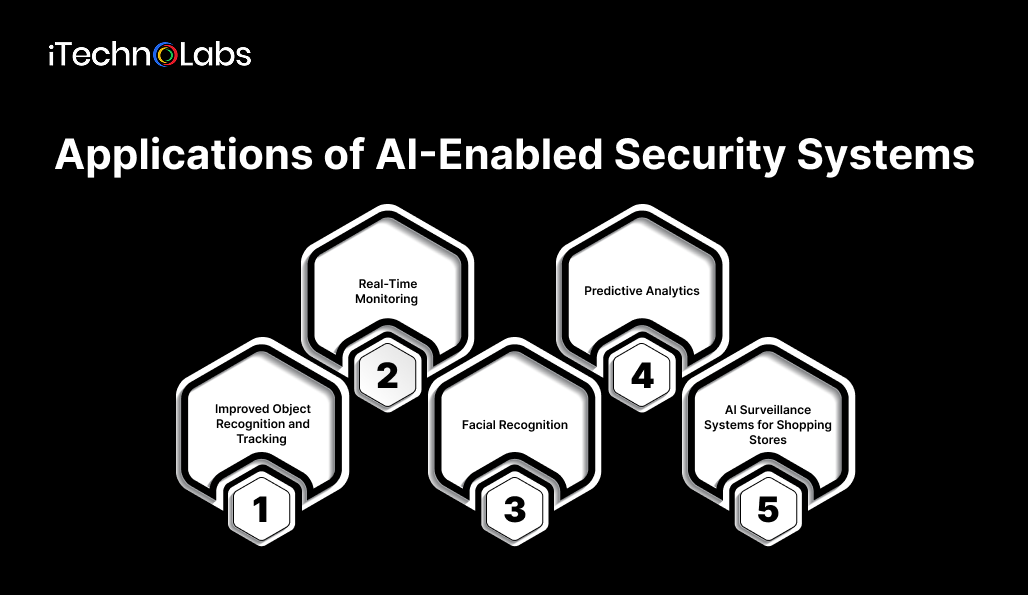
AI in the surveillance industry has changed the way people and organizations protect their precious data and assets. Unlike traditional security systems these AI surveillance systems can detect unusual movements in real-time and instantly send alerts to the security team and prevent security threats. Following are some of the applications of AI-powered security systems:
1. Improved Object Recognition and Tracking
With advanced computer algorithms the AI in surveillance systems can easily detect objects, something which traditional surveillance systems lack. The conventional security systems rely on manual monitoring and motion detection and hence struggle with accurately detecting objects. As a result there are more cases of false alarms due to swaying of trees and passing vehicles.
On the other hand, AI-powered cameras come with the powers to differentiate between humans, animals, and objects which reduces the chances of false alarm and leads to more effective monitoring.
2. Real-Time Monitoring
By using the powers of machine learning algorithms, AI in surveillance systems allows for real-time monitoring. The AI-enabled cameras can be easily trained to identify distinct objects like suspicious activity, unattended bags, or weapons.
This leads to proactive monitoring and informing security personnel in real-time that prevents potential security threats. For example, if a person leaves a bag in a public place, the AI in surveillance systems can understand the situation, inform the security team and reduce the risk of any potential threat.
3. Facial Recognition
One of the most powerful uses of AI in surveillance systems is facial recognition technology. The traditional security system relies on manual monitoring which is time-consuming and leads to more errors. AI algorithms can accurately identify facial features and emerge as an impactful tool for law enforcement agencies. This is an invaluable technology for high-stakes environments like government buildings, financial firms, airports, and corporate offices.
4. Predictive Analytics
Machine learning algorithms allow AI-powered surveillance systems to anticipate potential security threats based on past data. AI-driven cameras can easily learn the regular human movements like walking, running, moving, talking, etc. When an activity deviates from the standards, the smart cameras get triggered and send the alert to security personnel allowing for timely action before the situation gets worse.
Predictive analytics is invaluable in public settings like train stations or airports where they can detect abnormal behavioural patterns.
5. AI Surveillance Systems for Shopping Stores
Shopping centres constantly remain under the threat of shoplifting and larceny. So they need advanced technology to tackle this problem. The AI in surveillance systems can safeguard shop owners by detecting suspicious and unusual activities in real-time and informing the security teams on the spot.
The AI in surveillance systems can analyse the historical data of shopping centers helping businesses understand foot traffic and customer preferences. This data helps the shopping centres improve customer experience and enhance security.
Suggested Article: AI in Architecture
Real-World Examples of Companies Using AI Video Surveillance
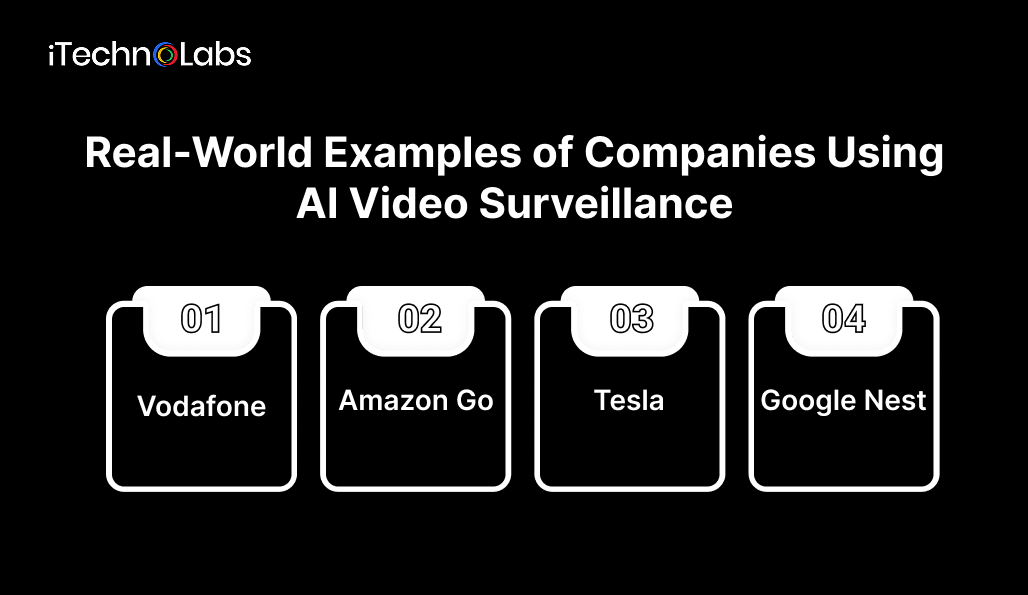
The scope of AI in surveillance systems is not just limited to one particular industry. World’s biggest companies from different sectors are utilizing AI-powered tools to enhance their security, provide better customer experience, reduce costs, and minimize the risk of potential security threats. Following are some of the top global giants using the power of AI to make their ecosystem safer, smarter and more secure than ever.
1. Vodafone
Vodafone, one of India’s largest telecommunication companies, uses AI in surveillance systems by integrating it with IOT devices to monitor their crucial infrastructure. This leads to comprehensive monitoring of their assets and reducing the risk of any security threats.
2. Amazon Go
Amazon Go uses AI-driven smart cameras to detect customer movements and purchases. Moreover, the latest “Just Walk Out” technology of Amazon facilitates a cashier-less shopping experience by automatically billing the customers for their items.
3. Tesla
Tesla uses AI to make its electric cars smarter. Its vehicles come with AI-powered cameras and sensors that can detect any suspicious activity in real-time, which trigger alarms and quickly send alerts to vehicle owners.
4. Google Nest
Google Nest utilizes AI in smart home security systems. Smart cameras and sensors can easily differentiate between regular activities and potential security threats. They can send alerts to homeowners and allow for real-time monitoring.
Challenges of AI in Surveillance Systems
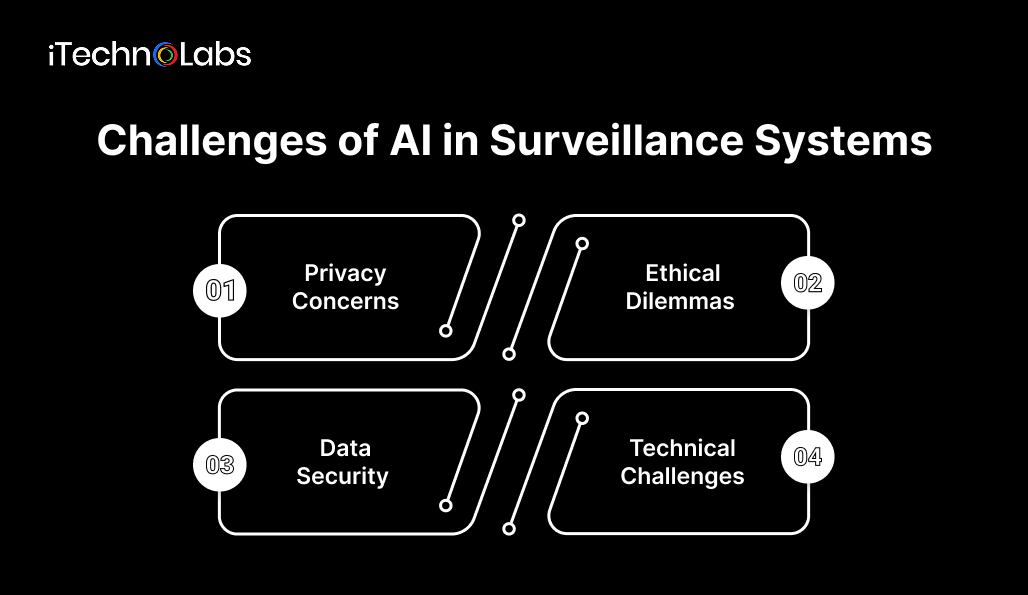
AI in surveillance systems comes with a wide range of benefits. However, one should not forget that just like any other thing it also comes with its own problems and issues. Data theft, ethical dilemmas, privacy issues, and technical challenges are common problems faced by companies who want to merge AI into their existing security systems. Following are some of the most common challenges organizations worldwide are facing to implement AI-powered surveillance systems.
1. Privacy Concerns
One of the biggest challenges of integrating AI into surveillance systems is intervening in people’s privacy. Since the systems used advanced algorithms to analyze large volumes of data, it gives rise to the challenges of infringement of individual privacy rights.
Solution: A robust security system and transparent policies needs to be implemented which ensures that AI in surveillance systems will be used in an ethical way.
2. Ethical Dilemmas
AI in surveillance systems come with ethical dilemmas, often when we talk about behaviour analysis and facial recognition. The feasibility of algorithms and the societal pressure of consistent monitoring raises the questions of ethical consideration.
Solution: Organizations need to use AI in surveillance systems in the most responsible way possible to avoid public retaliation.
3. Data Security
The large amounts of data produced by AI-powered security systems consistently remain the target of cyber criminals. Protecting this precious data from cyber attacks will be a constant challenge.
Solution: Organizations must ensure that the AI-enabled security systems comply with the data protection acts like GDPR and CCPA.
4. Technical Challenges
To integrate AI technology into existing security systems and adapt it to changing environmental conditions, one needs to be highly proficient in technical skills.
Solution: Businesses should partner with a reliable AI development company that can help them easily integrate AI into their existing surveillance systems and keep them updated on technological advancements.
Also, read: Role of AI in Business Intelligence
Conclusion
Gone is the time when one could have onboarded a security guard and slept peacefully. In today’s landscape of security where new threats are coming everyday and criminals are evolving too, there is a need for a super smart system that can detect suspicious activities in real-time and can alert the security teams on the spot.
Here in the picture comes AI-driven surveillance systems that can differentiate between humans, objects, animals, analyze large chunks of past data to detect unusual activities and can inform the security personnel then and there preventing the risk of security threat.
AI in surveillance systems enhances public safety, allows for scalability, saves cost, and reduces workload for human personnel. The AI-driven security systems can be used at highly sensitive areas like airports, train stations, and government offices to protect people from any security threat and damage. Along with the advantages come various challenges that need to be solved before implementing AI in surveillance systems. At iTechnolabs, we do this hard part for you. With a team of 200+ members and 840+ projects delivered successfully, we have proven expertise in providing AI-powered solutions. Visit iTechnolabs now and partner with the most reliable AI development company in India and take your security to the next level.
FAQs
1. What is the role of AI in surveillance?
By using advanced machine learning algorithms, AI surveillance systems can analyze unusual patterns in real time alarming the security personnel, facilitate real-time action and thus prevent security threats.
2. How can AI enable public surveillance?
AI-powered smart cameras come with advanced capabilities of differentiating between humans, objects, and animals. They can learn the regular movements of humans like walking, running, talking and when they see any unusual activity, they can quickly send the alert to the security team.
3. What are the problems with AI surveillance?
Following are the most common challenges with AI surveillance:
- Privacy invasion
- Lack of transparency
- Ethical issues
- Misuse for social control
- Data security vulnerabilities
4. How do AI Surveillance cameras work?
AI-powered smart cameras can differentiate between regular and irregular human movements and can react instantly by sending alerts to the security team in real-time to prevent security threats.

